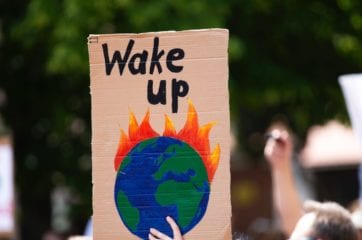
Communicating the Climate Crisis is a report by Maria Virginia Olano, Communications Director at Climate XChange.
Graphics and report design by Amanda Griffiths, Creative Director at Climate XChange.
Introduction
Challenges in Climate Communication
1. Spatial and Temporal Dissonance
2. Language barriers
3. Logical fallacies and a dichotomized perception of climate action
4. Informational deficit model
Lessons on Communicating the Climate Crisis
1. Provide a vision for the future and reiterate that we are well on our way to get there
2. Connect the dots on the things people already care about
3. Don’t shy away from uncertainty
4. Speak for the data through storytelling
At first glance, climate change communication is about educating and informing people about this massive issue, in order to mobilize and solve the climate crisis. On a deeper level however, climate change communication is shaped by our different experiences, mental and cultural models, and underlying values and world views. The way we talk about climate change, either as advocates, scientists, or regular citizens, affects the way people understand and think about both the problem and the solutions alike.
A lot of communication about climate change gets it right about the risk and possible negative scenarios, but wrong about how we try to accomplish the critical goal of not just raising public concern, but moving people to action. That’s because it appeals to reason, and reason is not what drives human behavior. It is a challenge that we must overcome in finding effective and efficient ways to not only communicate the science as evidence of anthropogenic climate change, but mobilize public support for action and solutions.
Stories about climate change are going to come from conversations we have with friends, family, and colleagues — we need to all become multipliers of this message. And in order to do so, we need to think deeply about this issue and understand how it will affect us. So we need to think critically about what kind of story we are telling. Are we telling a story of despair and so-called inevitability? Are we telling a story about negative emissions, feedback loops, tipping points, or other things most people don’t understand at all? Or are we telling a story of hope, possibility, and human agency? More importantly, are we making it clear when we talk about this that there are choices that we can make, which will determine what kind of future we are going to have.
Bringing CXC’s research and advocacy to the public in an engaging, accessible, and evocative way is critical to the success of CXC’s mission. Everything from the psychological understanding of how we receive data and information, what best inspires and moves people to action, and how to best work with other stakeholders to amplify our message, has informed the way we edit and design our media and content.
Creating engaging content on carbon pricing and the climate crisis is a way for us to grow our audience and reach constituencies that influence decision makers while mobilizing and giving agency to people who want to get involved.
Hear About Global Warming in the Media at least Once a Week
- Yes
- No
- Maybe
Believe Global Warming is Happening
- Yes
- No
- Maybe
Results from polling from the Yale Program on Climate Change Communication
We Can’t Stop Climate Change, But We Can (Still) Avoid The Worst-Case Scenario
Life on Earth is, in itself, a miracle. The conditions produced by the delicate balance of Earth’s planetary systems has allowed modern humans to flourish and thrive over thousands of years. But, while we relish in the gifts this planet...
“A world in which no one is disposable”
The youth climate and environmental justice movement has entirely reshaped the landscape of climate policy and changemaking. Young leaders from around the world have been central in not just leading mass mobilizations to demand action on climate and racial justice, ...
Why are we still missing our mark on climate messaging?
This year has been nothing but turbulent, in every sense of the word. We started 2020 with the onset of a global pandemic — accompanied by an economic downturn, soaring unemployment rates, and an enormity of death — followed by...
“No economy functions well when people are dying”
Insights into human psychology have provided the climate movement with a wealth of information about how people interpret, process, and behave in regards to messaging and communication strategies. Matthew Goldberg has built his career on understanding the complexities of the...


Spatial and Temporal Dissonance
There is a temporal and spatial dissonance when it comes to how we talk about climate change and therefore, how people think about the threat. We tend to think that climate change is a thing of the future, that it won’t happen now, but even if we do think it will happen now, we don’t think it will happen to us, and even if it does happen to us, our brains rationalize that it won’t possibly be that bad. Even if we know better, we still refuse to truly internalize the facts, and let it alter our behavior. It hasn’t really helped that we have largely focused on sharing images and stories from very far away. For a long time, climate communication relied on the polar regions, especially polar bears. We all remember those pictures, and while they’re powerful, true, and important, they ended up creating a collective understanding of climate change as something remote and removed from humans.
Given the difficulty and slow-moving pace of climate change impacts, the role of different media types has been highly emphasized and researched. Some researchers have placed high value on the importance of individual emotions and emotional responses in terms of delivering climate messages.
Top results for for searching “climate crisis” on Google on February 5th, 2020.
Google Trends data for searching “climate crisis” on Google. Interest over time represents interest relative to the highest point on the chart for a given region and time. A value of 100 is the peak popularity for the term. A value of 50 means that the term is half as popular. A score of 0 means there was not enough data for this term.
Research shows that the images people associate with climate change tend to be abstract and psychologically distant, devoid of specific geographic, social or temporal details, and typically do not feature people. The focus on the bear, for example, as a charismatic embodiment of the impacts of climate change was a disservice to the communications goal of understanding climate impacts as something that will be all encompassing, and affect not only other species living in the Arctic environment, but all around the world. I argue that historically, the issue of climate change has been highly focused on single-issue messaging, specifically around wildlife and the Arctic regions, that has resulted in the alienation of people from both the problem and the solution. For instance, in the communication of renewable energy transitions, as well as environmental degradation and species harm, the discourse has largely left humans out of the equation, out of the main problems, and therefore out of the solutions.
 Language Barriers
Language Barriers
There is a language barrier in climate change communication. The terminology used by scientists and advocates in communicating the climate crisis, has contributed to the public confusion on the issue. Naming the issue itself has been a challenge. The terms “climate change” and “global warming” have both been used for decades to refer to the atmospheric and climate disruptions caused by increased carbon dioxide and other heat-trapping gases in the atmosphere. However, neither of these terms is particularly effective in keeping the public engaged with the issue. This is partly due to the fact that both terms have a rather neutral connotation by themselves — there is nothing inherently good or bad about “change” or “warming” (in fact, people tend to like warm weather, which also becomes problematic). There is also a problem of fatigue and overexposure. Odds are you have heard both of these terms endlessly, and therefore have become “worn out.”
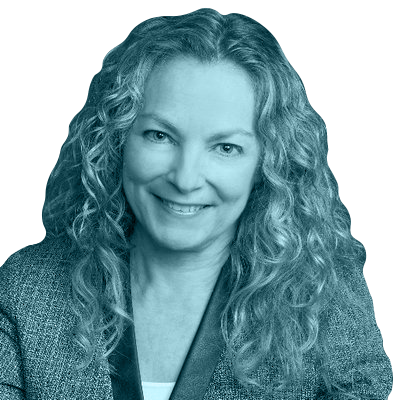
Susan Joy Hassol is the Director of Climate Communication, a non-profit aimed at assisting scientists and journalists in communicating climate change. She has built a career around the question of how to best communicate climate change and brilliantly identified the schism between scientific communication and every-day understanding of certain terms, which causes a lot of misunderstanding around climate change. Listen to my conversation with Susan on our podcast.
Another challenge when it comes to language in communicating climate change comes from communicating scientific findings with the public. Language is incredibly imprecise, and is something we usually do not tend to think too much about. Susan Joy Hassol from Climate Communication has made a career out of studying how to — and how not to — use language to most effectively communicate climate science specifically to a broad audience . Hassol has focused on investigating and uncovering a list of terms that are used to mean different things in a scientific context than they do in everyday language. She calls bridging this gap, “translating science into English.” Think about some of the terms you see on a daily basis in the formal language of climate scientists speaking to one another, conducting interviews, or writing reports: theory, THC, aerosols, enhance, error, bias, negative emissions, positive feedback, positive trend, etc. All of these terms mean something entirely different when used colloquially, which makes their use in communicating climate change very problematic, and has contributed to public confusion around the issue.
Theory. Taking this word as an example, when used in scientific terms, theory is used to refer to something that is widely accepted as truth. For instance, gravity is a theory. And yet when used outside of a scientific context, theory seems like a much weaker term for something that is speculative, or not necessarily proven science. This is why it is a problem when scientists refer to the “theory of climate change” — they are not saying it is speculation, or one of many different views on the issue, but that is how it can be perceived or spun to the public. Hassol has compiled a list of over 150 terms that similarly mean different things to the public and scientists. This is an incredibly useful tool and idea to keep in mind as we craft messages because it is more important to be accurate in convey the reality of scientific findings in a way that is approachable and simple.

Logical fallacies and a dichotomized perception of climate action
We’ve run into an issue of framing. We have bought into this dichotomized idea that climate action is about tough choices. Our cognitive biases, which are what our brains have been socialized to believe, even if not rooted in reason, play a big role here in making us buy into this idea. For example, the discourse around reducing carbon emissions has been framed in a way that sacrifices economic growth. Due to the historical association there is between emissions and economic growth since the industrial revolution, we are likely to assume this is causal, and if we reduce one, we are also giving up the other. But this is not the case at all. Another example is the idea that in order to move away from fossil fuels as energy sources, we must risk becoming energy insecure, or depend on foreign oil, or that climate action is simply too costly and there is no real political ambition to make it happen. These all seem logical, at first, and they are ideas that have been fed to us, but they are actually very far from the truth.
A frequent concern for researchers is how communications strategies can either generate action for change or dampen opportunities for it. Framing can be a big part of this challenge.[1] For many years, the focus of communicating climate change and scientific findings was simply that, to convey the damning scientific evidence that showed the effects of carbon in the atmosphere. However, we seem to have failed to integrate solutions in an accessible way to both policymakers and the public alike. This resulted in a dissonance between the larger problem and the tangible actions people can take to address them. Importantly, it resulted in mostly ‘alarmist’ responses to the climate crisis, and a backlash of opposition from those who understood this issue to be a vessel for massive (negative) changes to our way of life. This dichotomized view of climate action has actually been used by opposition to ground their arguments against any type of climate action, since it is equated with losing something we value — our economic well being, or energy security.
Worried about global warming
Global warming will harm people in the U.S.
Results from polling from the Yale Program on Climate Change Communication

Climate change perceptions have shifted dramatically among Americans in the past five years, with a double-digit increase of those who think of it as an important issue. The next step is how we translate that concern to political action. John Kotcher, Ph.D, is a Research Assistant Professor at George Mason University’s Center for Climate Change Communication, where he conducts research on science and risk communication. Listen to my conversation with John on our podcast.
A lot of researchers have focused on the role of values, beliefs, and identity of audiences in understanding the messaging around climate change and its impacts. One main takeaway from this body of research is that we understand incoming information, regardless of its medium, through our own biases and values. [2] [3] While researchers are mostly in agreement when it comes to the fact that these biases are present, some have gone on to argue that the message can be tailored to become more resonant to different audiences by tailoring it through values framing. [2] [4] Some have further argued that a lack of information is therefore not necessarily a barrier to action or understanding, but rather the framing to specific audiences and relevance to cultural and personal contexts. [5] There is a certain level of agreement in the field on the importance of understanding audiences in order to craft messaging for them, or in other words, to meet people where they are and tie your message to what they care most about. Of particular use is the role of the social sciences in understanding the cultural elements of audience perception to boost engagement, and the role of the arts in helping transmit these urgent messages.
 Informational deficit model
Informational deficit model
Communicators have often assumed that a lack of information and understanding explains the lack of public concern and engagement, and that more information and explanation is needed to move people to action. This assumption has been widely studied, and is known as the knowledge or information deficit model (Bak 2001;Sturgis and Allum 2004). We have fallen into the trap of believing that simply communicating the science is enough to move people to act. In communicating the immensity of climate change and the need for action, we have gotten too lost in the data, the fear, and the need to tell people how bad things are. The information deficit model is problematic in many ways — while it may seem obvious, it can actually backfire. First, the approach is based on the idea that information and understanding are necessary and/or sufficient conditions for behavioral or political engagement. It also assumes that people need to be aware of all the facts in order to make sound decisions, both in their daily lives and in their voting behaviors.
In communicating the immensity of climate change and the need for action, we have gotten too lost in the data, the fear, and the need to tell people how bad things are.
But cognitive psychology has proven that data does not inspire or move people to action, and that large statistics and large numbers are difficult for most people to digest and translate into meaningful understanding of issues. Moreover, there is widespread evidence that this model can also backfire in the sense that it turns people off to those communicators who might be perceived as condescending. People do not want to be perceived as ignorant or irrational (as is the result at times when climate advocates frame their arguments). This model has been debunked by social sciences, and yet much of the punditry and commentary around climate issues continues to be focused on information deficit. This needs to shift from the framing that ignorance about the details of climate change is what prevents greater concern and action. In other words, it really is not just about what we know. It is therefore time that we harness all the energy we have around this issue and become smarter and better with our public engagement in order to not simply educate and assume action will follow, but rather make action on the issue our main priority. There are a lot of ways we can do that, some of which will be discussed in the following sections of this report.

 Provide a vision for the future and reiterate that we are well on our way to get there
Provide a vision for the future and reiterate that we are well on our way to get there
The principal problem with fear as the main message of climate change communication is that it grabs attention (dire predictions, extreme consequences), but is often not what empowers action. Numerous studies have documented that audiences generally reject fear appeals (or their close cousin, guilt appeals) as manipulative. [6]
In order to get people to take action against risks, such as climate change, you can’t just scare them into action, you can’t just talk about the threat, you also have to talk about the ways in which their actions can make a difference in reducing that risk. [7] Moreover, shaming people about the behaviors they engage in that contribute to the issue of climate change will never work to persuade them to change those behaviors, or more broadly, advocate for policy action on climate change at a wider scale. Shame triggers a defense mechanism in people, who will resort to justifications for their behavior and exoneration from blame, rather than reflecting on the bigger picture of the issues.

John Schwartz is a science writer for The New York Times, focusing on climate change; he provides us with a look into the editorial and journalistic process of covering climate change, which is the story of our lifetime. The New York Times, as have many other institutions made deliberate decisions around this coverage, which include tossing out the idea that there are two sides to this story, and the pressing need to include multimedia and creative visuals to attract new audiences.
“When I talk to climate scientists, what strikes me is not their sense of hopelessness. In fact, the people who know the most about this are at many levels still hopeful, because they understand how we got here, and they know that it is possible to remediate or mitigate it […] I’m not just a broadcaster, I am someone trying to find the truth and, on a good day, there are people who are reading me and helping me along.”
John Schwartz
Instead, be hopeful. There is a lot of fear, despair, and disillusionment in the climate change conversation, but hopelessness has never moved anyone to action. Hope on the other hand, is a powerful emotion, one that has the potential to transform fear into something productive, and one that can give us back agency and a plan of action to deal with this. Hope is one of the most powerful tools we have to move people to take action. It is an emotion that can turn fear into something productive, and mobilize us in the kinds of numbers we will need in order to tackle the challenges we currently face.
Hope is one of the most powerful tools we have to move people to take action.
Along with creating this vision for the future in a way that embraces hope, it is also crucial to provide context and progress on how far we have already come. In truth, we are well on our way to creating a more sustainable future and making that a part of our message is incredibly important. People are more likely to engage with an issue and work towards it if they believe they are not starting from scratch, but have a head start. And we do have an incredible head start in terms of technology development and deployment. Even in terms of legislation, we have some groundwork to build from.
 Connect the dots on the things people already care about
Connect the dots on the things people already care about
There are so many aspects to the world as it is now that people agree are not optimal: our public transportation, the vulnerability of our electric grids, or how much our streets flood during storms. These are all things that we need to address whether or not you believe in climate change, and they can make us all better off if we do so. The most important thing is to recognize that solving climate change can and should help us address so many other issues that have, by history and design, left some of us worse off. So when we think about transportation, housing, urban planning, access to clean air and water, there has been a big element of social, racial, and gender inequity. If we get to rethink these systems to make them resilient to climate change, we can also rethink them in a way that is equitable.
Climate change is not an isolated issue, it is not an issue we need to tackle onto itself, but rather it is something that affects our everyday lives. Some people like to say that climate change puts us all on the same boat — that is to a certain extent true, but the impacts of climate change are very inequitable. We know that extreme weather, natural disasters, access to resources like energy and water, as so many other things within our societies, have left some of us marginalized. The very same among us who suffer in everyday life, are going to be those most burdened by the impacts of climate change — our communities of color, immigrant communities, LGBTQ+ communities, the working poor, people with different abilities.
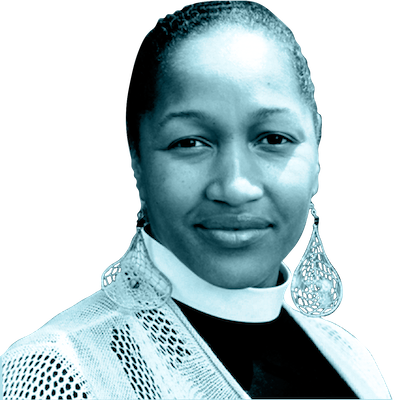
Boston native Reverend Mariama White-Hammond recently started her own congregation in the city, with a hope to make climate justice a central pillar of her message. I spoke with her on our podcast about the role of faith and spirituality in conveying the message about a changing climate, and importantly, our individual roles in being part of the solutions.
“Bringing other voices into the conversation helps us to connect with different ways of being that are different than the ones that led us to this crisis”
Rev. Mariamma White Hammond
We therefore need to be making very emphatic connections in the way we talk about how the climate crisis is inextricable from almost every issue of social injustice in the United States, and globally. This also presents an opportunity to work with people who are doing work in all these other fields, because when we take a step back, we can understand that really, the challenges we currently face are very much interconnected, and need interconnected and collaborative solutions. There are so many things about the world as it is now that if you asked people, they would agree are not optimal, they are already not great. Our public transportation, the fact that our electric grids are vulnerable, how much our streets are flooding during storms. These are all things that whether or not you believe in climate change, we need to address, and can make us all better off if do so.
The most important thing is to recognize that solving for climate change can and should help us address so many other issues that have, by history and design, left some of us worse off. So when we think about transportation, housing, urban planning, access to clean air and water – there has been a big element of social, racial and gender inequity – if we get to rethink these systems to make them resilient to climate change, we can also rethink them in a way that is equitable and better. Here it is important to note the so-called co-benefits of climate action. That is, the positive outcomes of making a switch to clean energy, cleaner transportation, and overall more sustainable systems. These things will benefit communities, the economy, which is why it is always crucial when communicating climate impacts to also emphasize the massive potential of climate action. We have overemphasized the long term impacts of taking action on climate change, when the reality is that many of the actions we need to take, moving away from coal, oil and gas, bring us benefits in the here and now. Specifically they benefit some of the most vulnerable within our societies.
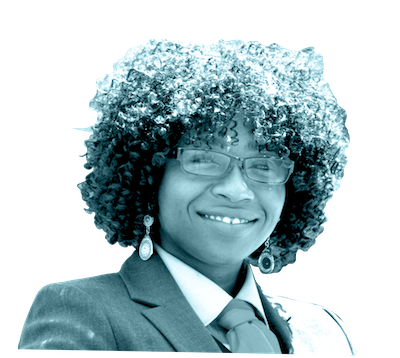
Dr. Atyia Martin is the former Chief Resilience Officer for the City of Boston, and is the Founder and CEO of All Aces Inc. a consulting firm with a mission to further critical thinking in advancing personal and organizational resilience. On this week’s episode of the podcast, Dr. Martin talks to me about the importance of critical thinking and humility in approaching systemic issues such as racism and climate change.
 Don’t shy away from uncertainty
Don’t shy away from uncertainty
Uncertainty is ordinary. We navigate uncertainty every day in our lives: the weather, the results of an election, whether we’ll be stuck in traffic, to name a few. But uncertainty is often used as an argument for inaction on climate change — if we are uncertain about future impacts or projections, how can we act? This should not continue to be a valid argument and there are ways we can better communicate uncertainty, when there is some, and move on from debating it when there is not.
Uncertainty is also an easily misunderstood term. Where it might be used to mean probability, or ambiguity, it is often confused with error or inaccuracy.
Importantly, the way we talk about science needs to change in order to represent and understand it better. Most of us tend to think about science as a fixed set of rules or facts. However, the reality is that science is constantly changing and evolving along with new and better tools, technology, and breakthroughs. It does not mean that the current scientific consensus is not valid, but rather, that we cannot be disappointed or disillusioned when it changes. For instance, in 2018 and 2019 alone, we have seen an increase in the frequency and severity of worst-case scenario projections for climate impacts, and the state of the climate crisis, due to new and improved research and findings. As communicators, we need to lead with what is known, rather than continuously reiterating what still is not. Climate messages need to start with areas of well-established broad agreement before moving on to the uncertainties and intricacies. Communication should make clear the scientific consensus, which is often underestimated, and possibly a gateway belief to further engagement with climate change.
Thirdly, uncertainty is not bad. The presence of uncertainty allows us to learn more, to have discoveries, to be creative, to be curious, and to have hope. Highlighting positive framings of uncertainty can be more productive than the negative. For instance, consider the positive frame: “If we act now, the chance of destructive winter floods occurring is 20%” rather than the negative: “If we fail to act, the chance of destructive winter floods occurring is 80%.” The positive message was linked to stronger intentions to act pro-environmentally, and can focus attention on hope and efficacy of action.
Uncertainty is also an easily misunderstood term. Where it might be used to mean probability, or ambiguity, it is often confused with error or inaccuracy. One way to avoid this is to shift from “uncertainty” to the more well-understood term “risk.” For instance, climate change increases the risk of extreme weather events, just like a weakened immune system increases the risk of contracting illnesses. For some audiences (such as politicians, business leaders, the military, and conservatives), risk may be more effective. Risk has greater resonance with conservative values, such as a desire to preserve, conserve, and be pragmatic. [8] It is commonly used in terms of national security, health, and insurance, and lends itself well to practical examples of climate risk (e.g. the risk of a village flooding, or crops being destroyed, or coastal buildings falling into the ocean). Managing risk leads people to weigh out the costs and benefits of inaction, which moves them beyond the mind-set of “waiting until the science is settled.”
Ultimately, most people do not think about the world in probabilities and charts; we think of the world through images, stories, and experiences. If you want to start a conversation and connect with someone — as opposed to, for example, draft a briefing for a politician — work around a story rather than a set of data. Research shows that people are unreliable at estimating the meaning of probability statements such as “very likely” or “very unlikely,” and while scientific charts can visually enhance the message, communicators shouldn’t assume their audience will necessarily read them in the same way a trained scientist would.
The main message around climate impacts, when informed by uncertainty, should therefore be that climate change is not a cliff but a slope. The choices we make individually and collectively can and will pull us back up. This framing gives us agency in understanding that nothing really is a given, and that no future scenario is inevitable, but is instead dependent on the decisions we make right now.
 Speak for the data through storytelling
Speak for the data through storytelling
Communicating risk in a way that acknowledges and respects the emotions and psychology of the people it tries to reach is likely to have far greater impact, which is exactly what the effort to combat climate change needs right now. Climate change, and how we address it, is fundamentally a human question — one that challenges the way we live, eat, move, organize, and do pretty much everything else. It can not just be thought of as a scientific or technological challenge or issue because it is deeply rooted in our human and social systems. Therefore, the story of climate change needs to be re-told as such — a human story, with all its nuances and complexities. It all starts with how we incorporate stories into the narrative because stories are sticky and are much more easily absorbed by people.
“In 2030 we ended the climate emergency, here’s how: If words make worlds, then we urgently need to tell a new story about the climate crisis. Here is one vision of what it could look and feel like to radically, collectively take action.”
Stories about climate change are going to come from conversations we have with friends, family, and colleagues— we need to all become multipliers of this message. And in order to do so, we all need to think deeply about this issue and understand how it will affect us. So we need to think critically about what kind of story we are telling. Are we telling a story of despair and so-called inevitability? Are we telling a story about negative emissions, feedback loops, tipping points, or other things most people don’t understand? Or are we telling a story of hope, possibility and human agency? More importantly, are we making it clear when we talk about this that there are choices that we can make, which will determine what kind of future we are going to have.
“We have a tendency to want to make things less emotional, less personal. But these are emotional issues, and they are personal. And to try to take out the emotionality is to dehumanize those people who are on the receiving end of the burdens of both racism and climate change.”
Dr. Atyia Martin
Ultimately, most people do not think about the world in probabilities and charts, we think of the world through images, stories, experiences. If you want to start a conversation and connect with someone — as opposed to, for example, draft a briefing for a politician — work around a story rather than a set of data.
ACKNOWLEDGEMENTS:
A huge thank you to our podcast guests, who were instrumental in bringing this project to life:
- Atyia Martin former Chief Resilience Officer for the City of Boston, and is the Founder and CEO of All Aces Inc.
- Reverend Mariama White-Hammond
- Susan Joy-Hassol, Director of Climate Communication
- Andrew Jones, the co-founder and co-director of Climate Interactive
- John Kotcher, Ph.D, Research Assistant Professor at George Mason University’s Center for Climate Change Communication
- Beatrice Fihn, International Campaign to Ban Nuclear Weapons, 2017 Nobel Peace Prize Laureate
- John Schwartz, science writer for The New York Times
ENDNOTES:
[1] Nicholson-Cole, S. (2005) Representing climate change futures: a critique on the use of images for visual communication. Computers, Environment and Urban Systems. Volume 29, Issue 3, May 2005, Pages 255-273
[2] Persson J, Sahlin N-E, Wallin A. (2015) Climate change, values, and the cultural cognition thesis. Environ Sci Policy 52:1–5
[3] Moser, S.C. and Dilling, L., 2011. Communicating climate change: closing the science action gap. In: J.S. Dryzek,R.B. Norgaard, and D. Schlosberg, eds. The Oxford handbook of climate change and society. Oxford: Oxford University Press.
[4] Holmes T, Blackmore E, Hawkins R, Wakeford T. (2012) “The Common Cause Handbook: A Guide to Values and Frames for Campaigners, Community Organisers, Civil Servants, Fundraisers, Educators, Social Entrepreneurs, Activists, Funders, Politicians, and Everyone in Between.” Yplas, Machynlleth: Public Interest Research Centre.
[5] Hulme, M., 2008. Geographical work at the boundaries of climate change. Transactions of the Institute of British Geographers 33, 5–11
[6] O’Neill, S., & Nicholson-Cole, S. (2009). “Fear Won’t Do It”: Promoting Positive Engagement With Climate Change Through Visual and Iconic Representations. Science Communication, 30(3), 355–379. https://doi.org/10.1177/1075547008329201
[7] Roeser S. (2012) Risk communication, public engagement, and climate change: a role for emotions. Risk Analysis 32:1033–1040
[8] Kahan, D.M., Wittlin, M., Peters, E., Slovic, P., Ouellette, L.L., Braman, D. and Mandel, G.N., 2011. The tragedy of the risk-perception commons: culture conflict, rationality conflict, and climate change. Temple University legal studies research paper, (2011-26).
REFERENCES:
Aston, G., 2012. The Oxford Handbook of Climate Change and Society. Perspectives In Public Health, 132(3), p.143.
Barnosky, A. D., Matlock, T., Christensen, J., Han, H., Miles, J., Rice, R. E., … White, L. (2016). Chapter 9. Establishing Common Ground: Finding Better Ways to Communicate About Climate Disruption. Collabra, 2(1), 23. DOI: http://doi.org/10.1525/collabra.68
Born, D. (2018). Bearing Witness? Polar Bears as Icons for Climate Change Communication in National Geographic. Environmental Communication, 1-15.
Center for Research on Environmental Decisions (CRED) (2014) Connecting on Climate: A Guide to Effective Climate Change Communication. New York and Washington, DC: CRED and ecoAmerica
Crompton T. (2011) Values matter. Nature Climate Change 1:276–277.
Francis P. (2015) Praise Be To You (Laudato Si’): On Care for Our Common Home. San Francisco, CA: Ignatius Press
Kahan, D. (2015) What is the “science of science communication”? Journal of Science Communication, 14(3), 1-10. Yale Law School, Public Law Research Paper No. 539
Lambert, J., & Bleicher, R. (2014). Improving Climate Change Communication Starting with Environmental Educators. Journal of Geoscience Education, 62(3), 388-401.
Leal Filho, W., Manolas, Evangelos I., Azul, Anabela Marisa, Azeiteiro, Ulisses, & McGhie, Henry. (2018). Handbook of Climate Change Communication. Vol. 1, Theory of Climate Change Communication.
Leal Filho, W., Manolas, Evangelos I., Azul, Anabela Marisa, Azeiteiro, Ulisses, & McGhie, Henry. (2018). Handbook of Climate Change Communication. Vol. 2, Practice of Climate Change Communication.
Leal Filho, W., Manolas, Evangelos, Azul, Anabela Marisa, Azeiteiro, Ulisses, & McGhie, Henry. (2018). Handbook of Climate Change Communication. Vol. 3, Case Studies in Climate Change Communication.
Russill, C ; Nyssa, Z (2009) The tipping point trend in climate change communication. Global Environmental Change-Human And Policy Dimensions, 2009 Aug, Vol.19(3), pp.336-344
Rayner, T. and Minns, A. (2015) The challenge of communicating unwelcome climate messages. The Tyndall Centre, University of East Anglia – working paper 162
Ockwell, D., Whitmarsh, L., & O’Neill, S. (2009). Reorienting Climate Change Communication for Effective Mitigation: Forcing People to be Green or Fostering Grassroots Engagement? Science Communication, 30(3), 305–327



